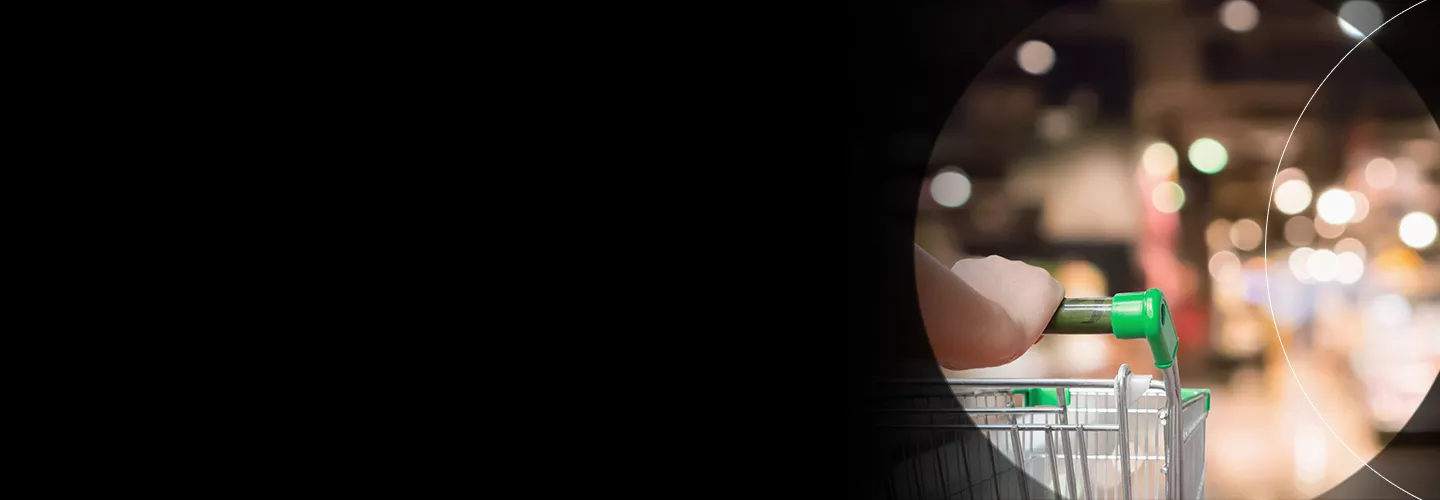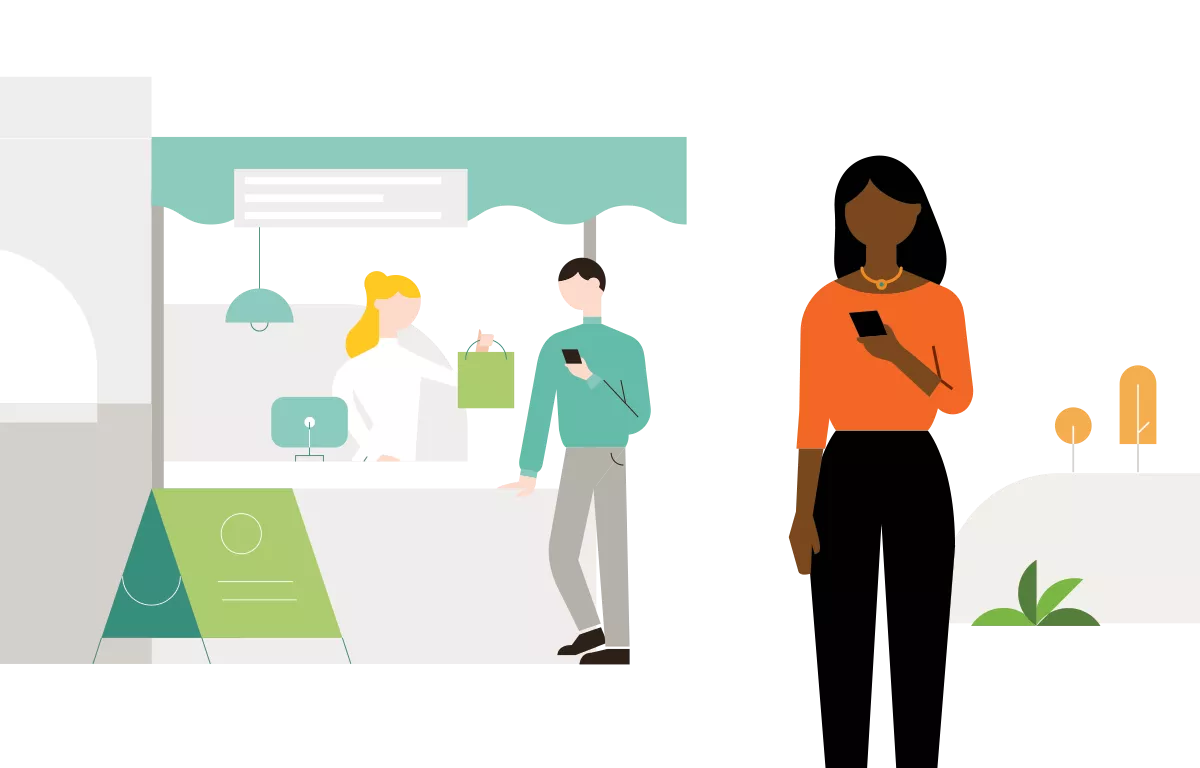In many ways, living in a pandemic the last two years has put a hyper-focus on consumers –how, what, where and why they buy.
The “great reset” in the last two years sparked a recalibration of our priorities, values and behaviors, and with it came the “great rewire,” an acceleration of technology adoption, as well as enhanced innovation and infinite possibilities. Given these shifts, how will the CPG industry attract new consumers and keep existing consumers engaged? Several trends will impact how companies navigate 2022, including
- quickly evolving consumer needs and a growing need for data
- lasting effects from the accelerated shift to digital and the emergence of new channels
- new tactics for building loyalty, including hyper-personalization and reimagining convenience
By the summer of 2020, just a few months after the start of the global pandemic, the percentage of retail happening online had accelerated forward 2-3 years.
Evolving consumer needs
"The only thing certain is uncertainty."
That holds especially true for consumer needs and preferences, making life for any CPG company more challenging than ever. The “great reset” was coined by the World Economic Forum to declare that there’s no going back to the way things were pre-pandemic.
One of the most significant changes was the massive and swift adoption of digital. By the summer of 2020, just a few months after the start of the global pandemic, the percentage of retail happening online had accelerated forward 2-3 years. Consumer and business adoption of digital and other new technology provided flexibility that we fully embraced in how we work, play, learn and shop.
But there’s also a considerable amount of confusion and uncertainty among consumers in how they view their own great reset. Our brains weren’t wired to handle so much uncertainty and change, according to experts, and some consumers express concern about re-entering society. The great reset also included the great resignation as people reexamined their careers and life goals.
Two trends earning a starring role are the heightened need for safety and convenience. Retailers have responded accordingly, finding innovative ways to get everyday products to consumers in low-touch ways. For example, bringing a gas station convenience store out to the pump, as Circle K did in the US and Canada, so consumers don’t have to come indoors to buy a snack or drink. Or staff-free grocery stores such as Sainsbury’s SmartShop, Tesco GetGo and Amazon Fresh, which are trialing in the UK.
These shifting trends and evolving shopping habits make it all that more important for CPG companies to stay closer to the consumer. Companies have asked the following questions for years, but the answers are now shifting and seem less certain, which only accelerates the need for data and consumer insights.
CPGs require a single platform encompassing a wealth of data from macro to item-level. This will be key to delivering sophisticated and predictive insights, longitudinal customer views, cross retailer comparisons and more sophisticated shopper segments for optimized targeting.
Who is buying my product?
Where are they buying it?
Why are they buying it?
What else are they buying?
Where else are they shopping?
How much are they paying?
How price-sensitive are they?
What is their path to purchase?
What are my new cross-sell opportunities?
What new products should we launch to satisfy changing consumer needs?
How should I shift my distribution strategy?
How do I better predict demand?
How do I predict economic trends and incorporate them into our pricing strategy?
And the list goes on.
Capitalizing on accelerated digitization
The shift to an e-conomy has been a boon for companies able to capture the digital wave.
During the pandemic, PepsiCo introduced two new DTC sites—PantryShop.com and Snacks.com, where consumers can order specialized bundles of Pepsi brands like Quaker, Gatorade and SunChips. In addition, Snacks.com sells the company’s Frito-Lay products. M&M’s, owned by Mars, was recognized in 2021 by Forrester for having the best-in-class DTC website among CPG companies. Consumers can design their own M&M’s and order gift sets.
Online marketplaces also have a key role to play in many DTC strategies. Their existing scale makes them an extremely attractive channel, but of course this comes with less control than an owned DTC channel. The trick for CPG companies is optimizing their strategies for each marketplace, which may have different ways of offering products to consumers, such as premium search positions or ongoing subscription plans. Marketplaces focused on a particular country or region will also have nuances in their marketing and consumer engagement.
Subscriptions have also rocketed. Globally, there’s been a significant rise in e-commerce subscriptions, such as wine clubs, meal kits, pet food, weekly grocery delivery and clothing. Nearly 88% of countries across 32 markets saw a surge in subscription services in 2021 compared to the previous year , according to the Mastercard Economics Institute’s “Economic Outlook 2022” report. Cloud-based computing, which allows for a seamless payments experience, has been a key enabler for the subscription economy’s growth, resulting in a rising number of new businesses and consumer interest.
Subscriptions offer CPG companies another way to reach consumers with unique services based on niche needs and preferences, such as sustainability and products they can’t find in stores. For example, laundry subscription boxes that offer more sustainable products and refills that cut down on packaging. Others have seen success with subscriptions for snacks from around the world or unique pet toys and food.
Finding innovative strategies to connect more directly with shoppers is key for CPG brands as consumers get more comfortable relying on digital channels for a broad range of needs. And the range of channels available to connect is continuously evolving. For example, no one would have guessed five years ago that marketing budgets would be allocated to influencers and shopping through livestreams. As we continue to move into the future, testing the impact of these new sales channels will be important for CPG companies to optimize marketing budgets and capitalize on evolving shopping trends.
Up the ante on loyalty
E-commerce gives consumers the ability to shop around more easily, compare prices and try new products.
But, as a result, loyalty in the digital ecosystem is wildly more challenging, requiring sellers to leverage hyper-personalization with sophisticated tools and tactics.
Consumers are hit with digital messages from brands every second of the day, whether they’re checking email or scrolling social media feeds. But without a sense of connection to that brand or highly relevant and timely messages, that digital communication often gets ignored. Hyper-personalization means tailoring every interaction to the consumers’ needs and preferences across digital and non-digital channels. A loyalty program, such as Nike Membership, that goes beyond rewards by offering customizable products, early access to new releases, and access to live experiences, encourages customers to seamlessly transition between digital and non-digital interactions.
Hyper-personalization also means connecting with consumers on shared values. The great reset inspired more purposeful buying, where a company’s values play a bigger role in what consumers choose to buy, even if it means paying more. Globally, 85% of adults say they’re willing to take personal action to combat environmental and sustainability challenges. And 62% say it’s now more important that companies behave in sustainable and eco-friendly ways. For example, P&G’s “It’s Our Home” campaign tries to reach climate-conscious consumers with ads that encourage changes to our daily routines, such as turning off the water while brushing our teeth.
Globally, 85% of adults say they’re willing to take personal action to combat environmental and sustainability challenges.
In addition to connected values, the consumer appetite for loyalty programs with relevant incentives has held steady. In a survey of 2,200 US consumers in 2021 by Loyalty360 and PrizeLogic, 74% said they have enrolled in at least one CPG loyalty program, with food and beverages ranking the highest. Consumers who join the programs are primarily driven by the incentives they offer, and 72% said their participation in loyalty programs has resulted in incremental CPG purchases.
For example, consumers have been drawn to loyalty programs like Anheuser-Busch’s My Cooler Rewards. Consumers accumulate points for product purchases and redeem them for certain items.
Red Bull, known for its online sports content, rewards its loyalty program members for watching and reading content, making purchases and other activities. Those points can be used for everything from product discounts to experiences like factory tours and designing a racing helmet.
Consumers are driven by incentives and unique experiences that naturally tie back to their own values. Loyalty programs that speak to those unique preferences will win the most long-term customers. Loyalty and engagement solutions like Mastercard’s SessionM enable marketers to build engaging loyalty programs and personalized customer experiences.
Learn more
A parting word
These consumer trends will continue to evolve, heightening the importance of having the right insights to continue innovating and developing the right strategies for getting closer to today’s evolving consumer. This is especially important as the pandemic wanes and competition only continues to expand.













